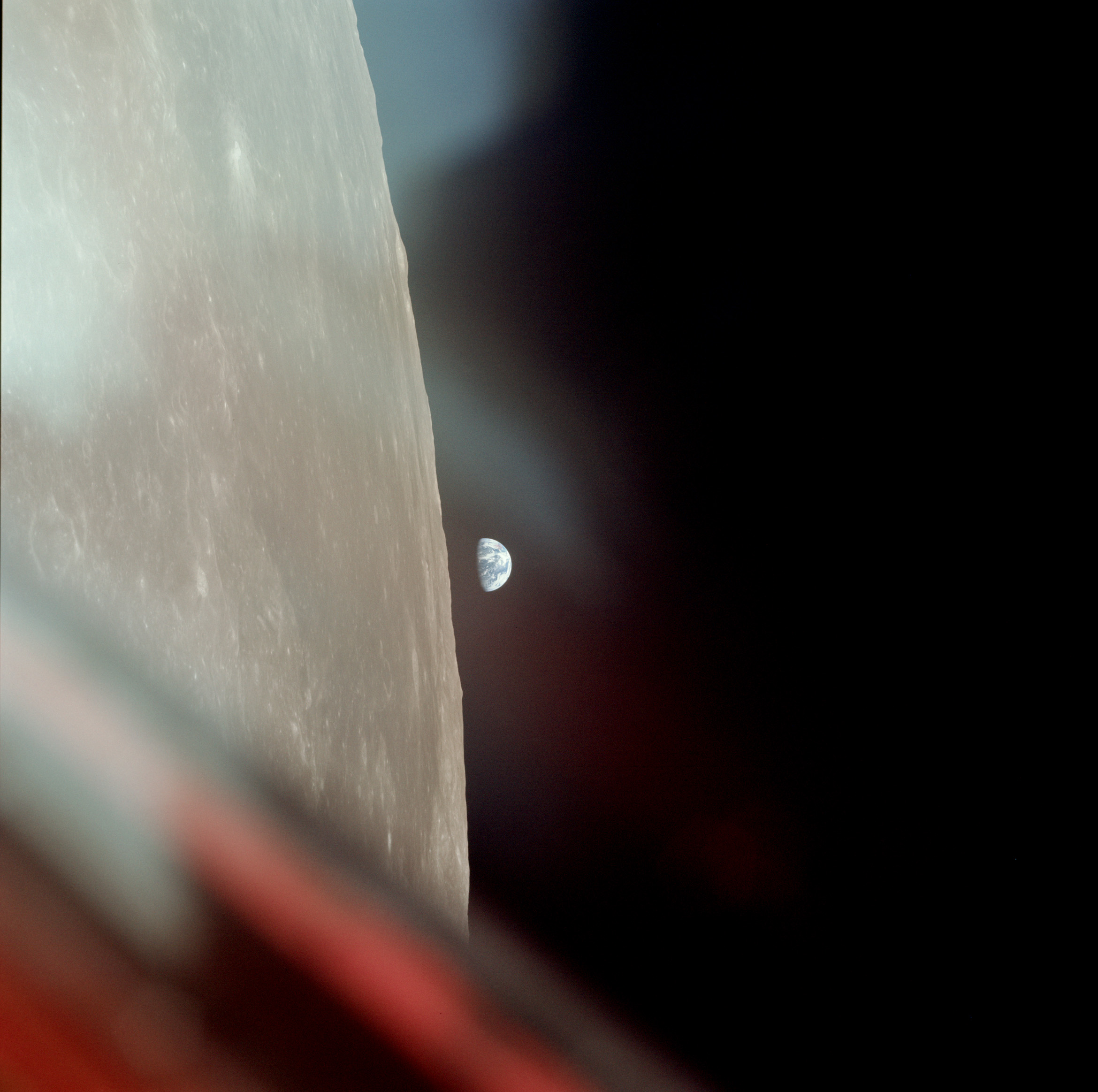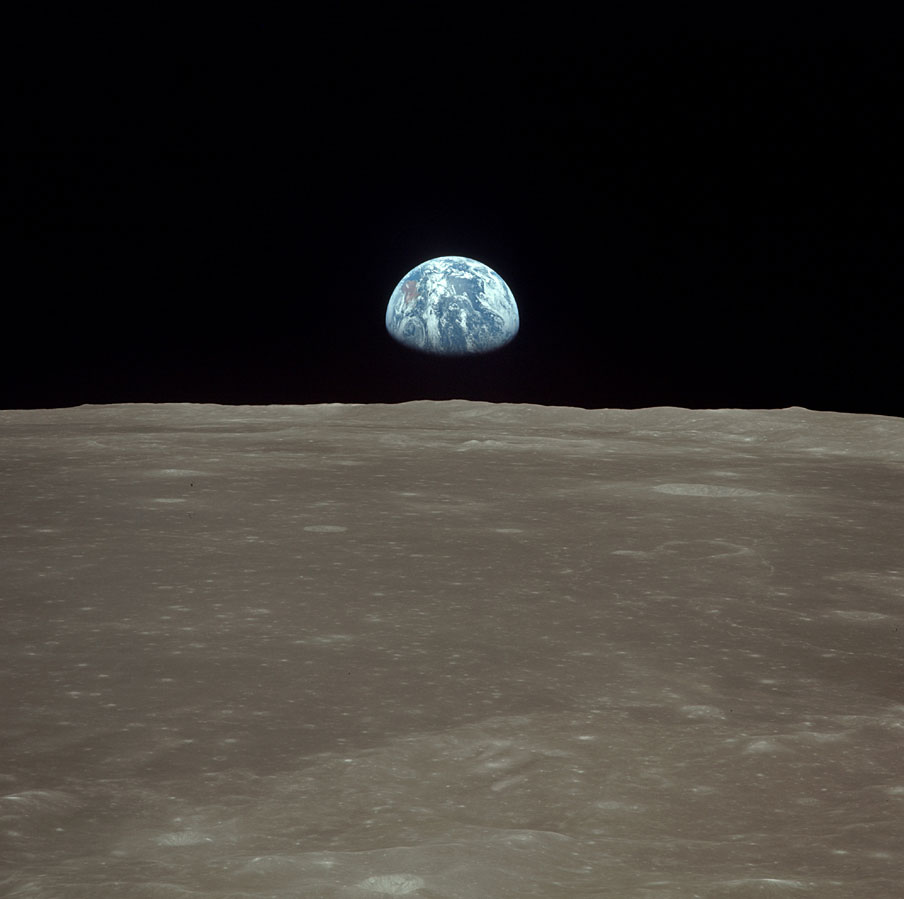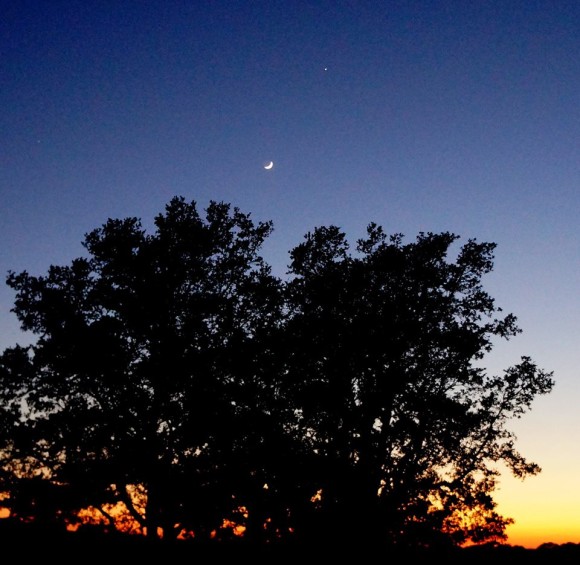It looks like you're using an Ad Blocker.
Please white-list or disable AboveTopSecret.com in your ad-blocking tool.
Thank you.
Some features of ATS will be disabled while you continue to use an ad-blocker.
share:
a reply to: wildespace
Exactly. Focal length makes quite the difference.
For example, here are two images of the earth taken from Apollo 11. The first one is taken with a focal length of 80 mm. The second one was 250 mm.


By the way, depending on the focal length of pictures taken of the Moon from earth, the Mmoon can look surprisingly small in those pictures. The moon always looks a lot smaller than you expected it to look in pictures when taken with most consumer cameras.
Here are some picture of the Moon taken with consumer-use cameras, most of which have a focal length between 24 mm and 35 mm:


Try it with your own consumer digital camera or phone camera. Take a non-zoomed picture of what looks like a big moon with the camera, then take a look at it the picture; the Moon will seem too small. It always looks bigger in real life than it does in pictures.
Exactly. Focal length makes quite the difference.
For example, here are two images of the earth taken from Apollo 11. The first one is taken with a focal length of 80 mm. The second one was 250 mm.


By the way, depending on the focal length of pictures taken of the Moon from earth, the Mmoon can look surprisingly small in those pictures. The moon always looks a lot smaller than you expected it to look in pictures when taken with most consumer cameras.
Here are some picture of the Moon taken with consumer-use cameras, most of which have a focal length between 24 mm and 35 mm:


Try it with your own consumer digital camera or phone camera. Take a non-zoomed picture of what looks like a big moon with the camera, then take a look at it the picture; the Moon will seem too small. It always looks bigger in real life than it does in pictures.
edit on 9/16/2015 by Soylent Green Is People because: (no reason given)
originally posted by: frostie
Im no expert on the sizes of the planets and how they would appear if they were the same distance away as the moon.
I was thinking Jupiter should appear much bigger.
Thoughts?
If you want you can check out the accuracy yourself by using either Space Engine or Celestia
Both allow you to create moons around the planets in our solar system.
So what you'd do is create the Earth at a lunar distance (around 385,000 km - they use km not miles).
Land on "Earth" orbiting each planet and look back.
Space Engine is highly accurate scientifically so I'd give that one the edge in terms of realism.
edit on 16-9-2015 by JadeStar because: (no
reason given)
I remember watching a TV show about the universe and it stated that the moon, during the prehistoric times, would have taken up much of the horizon.
Don't quote me on this, but i believe the moon is distancing itself from the Earth at 1.5 inches per year, can't remember where I read/heard this. But
considering the size of the planets compared to our moon, i can see this picture being accurate in a sense.
Is it possible for Earth to have a satellite as big as Jupiter? Have we spotted any planets that have a moon whose size dwarfs the planet it circles?
a reply to: carewemust
If Earth had a satellite as big as jupiter then wouldnt the earth be considered the stellite? Doesnt the bigger object take the cake because of its gravitational mass?
Im guessing we never have... because of what I posted above. I know pluto exsits in a bi-planetary system with charon. But I think thats as close as you will get with what you asking.... Considering the bigger mass will always take the name as planet and the smaller mass will be considered the moon.
If Earth had a satellite as big as jupiter then wouldnt the earth be considered the stellite? Doesnt the bigger object take the cake because of its gravitational mass?
Im guessing we never have... because of what I posted above. I know pluto exsits in a bi-planetary system with charon. But I think thats as close as you will get with what you asking.... Considering the bigger mass will always take the name as planet and the smaller mass will be considered the moon.
a reply to: xCory
I know youre correct as saying the moon is moving away from us at a minuscule rate.
The question is have the earth/moon been around long enough for the moon to once be near the horizon of earth?
If the timing has been billions of years than thats billions of inches... im sure someone has done the math
I know youre correct as saying the moon is moving away from us at a minuscule rate.
The question is have the earth/moon been around long enough for the moon to once be near the horizon of earth?
If the timing has been billions of years than thats billions of inches... im sure someone has done the math
originally posted by: frostie
a reply to: carewemust
If Earth had a satellite as big as jupiter then wouldnt the earth be considered the stellite? Doesnt the bigger object take the cake because of its gravitational mass?
Yes.
originally posted by: RoScoLaz4
well the earth should look a whole lot bigger, seen from the moon, than it actually appears to in every moon-based 'earth shot'. so accuracy isn't to be taken for granted.
Neither is knowledge many so called intelligent people have tried to claim the Apollo Mission were faked due to what they see in photographs but all they prove is they don't understand photography / optics and imaging in general.
edit on 17-9-2015 by wmd_2008 because: (no reason
given)
originally posted by: wmd_2008
originally posted by: RoScoLaz4
well the earth should look a whole lot bigger, seen from the moon, than it actually appears to in every moon-based 'earth shot'. so accuracy isn't to be taken for granted.
Neither is knowledge many so called intelligent peopl have tried to claim the Apollo Mission were faked due to what they see in photographs but all they prove is they don't understand photography / optics and imaging in general.
True. It's been my experience that when people say "the Earth looks too small in those Apollo pictures", and then you ask them what focal length was used for the picture in question, and what size would the Moon look from Earth in non-cropped pictures using that same focal length, they are likely to say "I don't know".
edit on 9/17/2015 by Soylent Green Is People because: (no reason given)
a reply to: carewemust
If an object like Jupiter appeared at our doorstep,
I bet Moon and Earth would both become moons to the bigger object.
If an object like Jupiter appeared at our doorstep,
I bet Moon and Earth would both become moons to the bigger object.
a reply to: frostie
If i did my calculations correct:
And there could be some opposing factors, ie. the distance it was moving away could have been totally different at some point throughout the 4.5 billion years of it's existence.
4,500,000,000 years ago the moon was created. Multiplied that by 1.6 inches per year that the moon is moving away from the earth, and came up with 7,200,000,000. Then i divided that by 12 inches to get the amount of feet it has moved total and came up with 600,000,000. Divided that by 5280 feet (mile) and got 113,636. So i'm guessing that 238,855 miles (distance now) minus 113,636 (distance moved in 4.5 billion years) would have made it 125,219 miles away at the time of birth.
Hopefully someone can confirm my math lol.
If i did my calculations correct:
And there could be some opposing factors, ie. the distance it was moving away could have been totally different at some point throughout the 4.5 billion years of it's existence.
4,500,000,000 years ago the moon was created. Multiplied that by 1.6 inches per year that the moon is moving away from the earth, and came up with 7,200,000,000. Then i divided that by 12 inches to get the amount of feet it has moved total and came up with 600,000,000. Divided that by 5280 feet (mile) and got 113,636. So i'm guessing that 238,855 miles (distance now) minus 113,636 (distance moved in 4.5 billion years) would have made it 125,219 miles away at the time of birth.
Hopefully someone can confirm my math lol.
Thanks for reminding me of that link to spacengine:
en.spaceengine.org/
Now, this is what I thought Saturn would look like (watch at the end):
(consider this a nod to a weird last-man-on-earth film)
en.spaceengine.org/
Now, this is what I thought Saturn would look like (watch at the end):
(consider this a nod to a weird last-man-on-earth film)
edit on 9/18/2015 by jonnywhite because: (no reason given)
a reply to: frostie
Eh just did a little poking around google, kept coming across people saying that the moon itself doesn't have the velocity to break away from earths gravitational pull. But i'm sure it can be calculated to see how long it would take at the going rate of 1.6" per year, if it were able to break away eventually.
Eh just did a little poking around google, kept coming across people saying that the moon itself doesn't have the velocity to break away from earths gravitational pull. But i'm sure it can be calculated to see how long it would take at the going rate of 1.6" per year, if it were able to break away eventually.
new topics
-
Thousands Of Young Ukrainian Men Trying To Flee The Country To Avoid Conscription And The War
Other Current Events: 2 hours ago -
12 jurors selected in Trump criminal trial
US Political Madness: 5 hours ago -
Iran launches Retalliation Strike 4.18.24
World War Three: 5 hours ago -
Israeli Missile Strikes in Iran, Explosions in Syria + Iraq
World War Three: 5 hours ago -
George Knapp AMA on DI
Area 51 and other Facilities: 11 hours ago -
Not Aliens but a Nazi Occult Inspired and then Science Rendered Design.
Aliens and UFOs: 11 hours ago
top topics
-
George Knapp AMA on DI
Area 51 and other Facilities: 11 hours ago, 25 flags -
Israeli Missile Strikes in Iran, Explosions in Syria + Iraq
World War Three: 5 hours ago, 14 flags -
Louisiana Lawmakers Seek to Limit Public Access to Government Records
Political Issues: 13 hours ago, 7 flags -
So I saw about 30 UFOs in formation last night.
Aliens and UFOs: 17 hours ago, 6 flags -
Iran launches Retalliation Strike 4.18.24
World War Three: 5 hours ago, 6 flags -
Not Aliens but a Nazi Occult Inspired and then Science Rendered Design.
Aliens and UFOs: 11 hours ago, 5 flags -
12 jurors selected in Trump criminal trial
US Political Madness: 5 hours ago, 4 flags -
The Tories may be wiped out after the Election - Serves them Right
Regional Politics: 15 hours ago, 3 flags -
Thousands Of Young Ukrainian Men Trying To Flee The Country To Avoid Conscription And The War
Other Current Events: 2 hours ago, 3 flags
active topics
-
Mandela Effect - It Happened to Me!
The Gray Area • 108 • : ArMaP -
Mood Music Part VI
Music • 3058 • : Hellmutt -
Fossils in Greece Suggest Human Ancestors Evolved in Europe, Not Africa
Origins and Creationism • 60 • : whereislogic -
Scarface does Tiny Desk Concert
Music • 7 • : sitrose -
The Acronym Game .. Pt.3
General Chit Chat • 7727 • : F2d5thCavv2 -
Russia Ukraine Update Thread - part 3
World War Three • 5697 • : F2d5thCavv2 -
Do we live in a simulation similar to The Matrix 1999?
ATS Skunk Works • 22 • : SchrodingersRat -
Iran launches Retalliation Strike 4.18.24
World War Three • 15 • : semperfortis -
President BIDEN Warned IRAN Not to Attack ISRAEL - Iran Responded with a Military Attack on Israel.
World War Three • 43 • : WeMustCare -
Israeli Missile Strikes in Iran, Explosions in Syria + Iraq
World War Three • 52 • : WeMustCare

